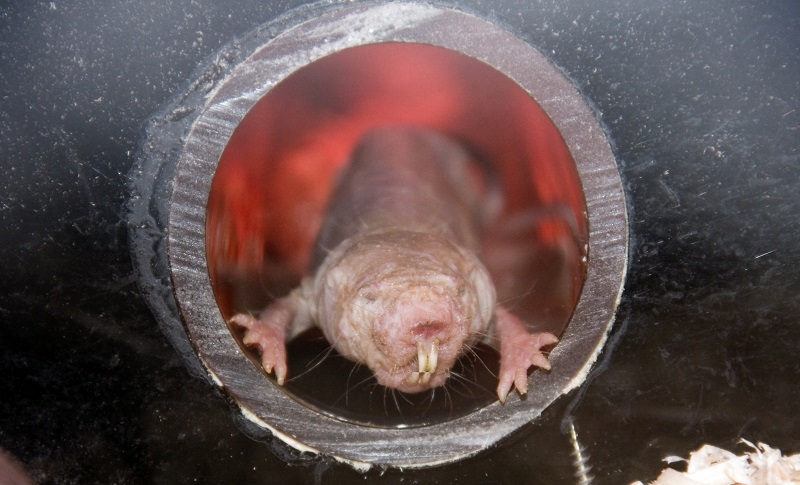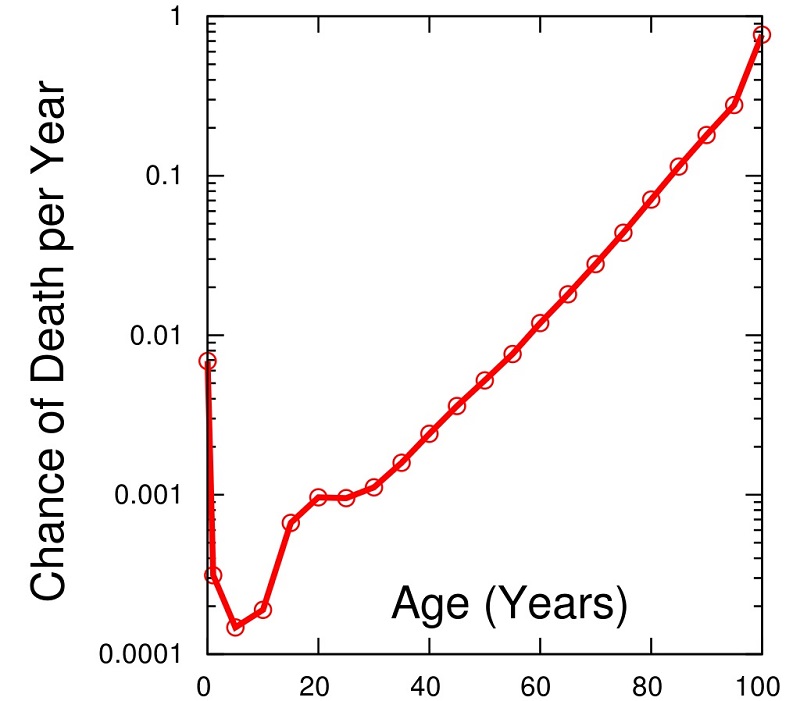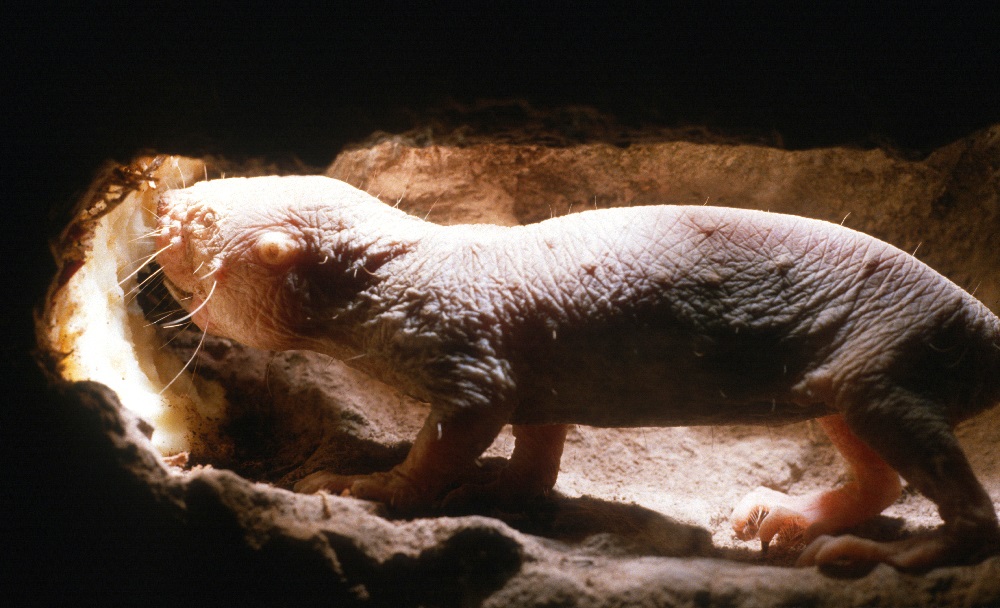Google’s Calico Labs announces discovery of a “non-aging mammal.”
Summary: Google’s ultra-secretive Calico Labs announces a significant discovery – the naked mole rat is the first and only non-aging mammal and shows little signs of aging as it gets older. [This article first appeared on the website LongevityFacts.com. Author: Brady Hartman. ]
With wrinkly skin and completely bald, the naked mole rat is one of the ugliest creatures around but lives an exceptionally long life for a small mammal. It rarely develops the chronic diseases of aging such as cancer and lives 10 times longer than regular rats.
The First Non-Aging Mammal
In the first significant announcement since it was formed in 2013, Calico Labs researchers Rochelle Buffenstein, Megan Smith, and J. Graham Ruby announce that the naked mole rat is a “non-aging mammal.”
The researchers followed the naked mole rats – housed at the Buck Institute – over a three-decade-long study period. They found that these creatures show hardly any signs of aging, such as problems with their metabolism, heart, or bones. Females do not go through menopause and continue to reproduce into their 30’s. An amazing feat for an animal that lives to live at least 30 years of age in captivity. Small rodents the size of the naked mole rat live for no more than six years. Even the cells in their bodies have a remarkable resistance to oxidative damage caused by free radicals.
Senior Principal Investigator on the study is Rochelle (Shelley) Buffenstein, Ph.D. who spent the early part of her career at the Medical School of the University of Witwatersrand, in South Africa, where she studied the naked mole rat for ten years. Principal Investigator J. Graham Ruby, Ph.D. received his doctorate in biology from MIT and performs biometric, biostatistical, bioinformatic, and quantitative genetic analyses of diverse data to decipher the aging process in humans and model organisms. The researchers published their results on Jan 24th in the open access journal eLife.

How the Non-aging Mammal Was Discovered
To judge the rate of aging, the Calico team used a mathematical model called the Gompertz-Makeham law of mortality. This statistically-validated law states that the risk of death for every mammal increases exponentially with increasing age. The Calico researchers used this model to analyze an existing data set of more than 3000 naked mole rats over a 30-year timespan and found that the small mammals did not conform to the Gompertz-Makeham law. Unlike every other mammal, the mole rats do not face an increased hazard of death with each birthday, as the Calico authors said,
“This absence of hazard increase with age, in defiance of Gompertz’s law, uniquely identifies the naked mole-rat as a non-aging mammal.”

This is astonishing given that all other mammals, including humans, face an increased rate of death with each passing birthday. Consider the hazard chart for US citizens in 2003, shown above in which the mortality rates increase exponentially with age after the age of 30. In contrast, the equivalent chart for the naked mole rat is almost flat.
Caleb E. Finch and Hiram Beltrán-Sánchez, a pair of expert scientists from the University of Southern California (USC) in Los Angeles analyzed and commented on the study. Caleb E. Finch, Ph.D. is a molecular biologist in the Leonard Davis School of Gerontology and Dornsife College and has previously appeared in an article on this website. Hiram Beltrán-Sánchez in the Department of Community Health Sciences and California Center for Population Research.
Commenting on the remarkable results of the study in a companion piece, Finch and Beltrán-Sánchez said that the naked mole rat defied the Gompertz-Makeham law, remarking
“their risk of death does not increase as they get older,” adding “This is unprecedented for mammals.”
Finch and Beltrán-Sánchez said that previous studies of the non-aging mammal suggest that aging creeps in, never the less. Naked mole rats can accumulate oxidative damage in their cells and experience muscle wasting. There is also some evidence for small amounts of cancer. But, after reviewing the evidence, the USC authors said
“This would suggest that unlike any other mammal, the naked mole rats have an extremely low rate of aging.”
Finch and Beltrán-Sánchez said that the minimal age-related problems of the mole rat combined with its long life-span allow it to achieve ‘negligible senescence,’ a phenomenon in which an animal reaches an advanced age without increased mortality or disability.
Other scientists believe that the longevity of naked mole rats is due to the limited oxygen of its subterranean habitat. Because of this environment, its metabolic rates are abnormally slow, and an abundance of repair mechanisms keep their cells astonishingly youthful.
Related articles:
- This article appears in the monthly summary of the life extension discoveries of January.
- A related article shows you how the naked mole rat mostly avoids cancer.
- Google’s Calico Labs is hoping to outsmart death. Until recently, this 1.5 Billion dollar biotech startup has been cloaked in secrecy. However, this report reveals what Calico Labs has been up to lately.
Show Us Some Love
- Share this post on social media and help us spread the word– It only takes one click on any of the social media links on this page.
- Follow us on social media – Google+ or Reddit
- Sign up for our email list – We use your email to notify you of new articles. We will not send you spam, and we will not share your email address. You can cancel at any time.
- Tell us what you think – Scroll down to enter your comments below.
References
Cover photo credit: Naked mole rat, the only non-aging mammal. Credit: Shutterstock.
J Graham Ruby, Megan Smith, Rochelle Buffenstein, Calico Life Sciences LLC. “Naked mole-rat mortality rates defy Gompertzian laws by not increasing with age.” eLife 2018;7:e31157 DOI: 10.7554/eLife.31157, Jan 24, 2018. Link to article.
Hiram Beltrán-Sánchez, Caleb Finch. “Life Expectancy: Age is just a number.” eLife 2018;7:e34427 DOI: 10.7554/eLife.34427 Jan 24, 2018. Link to article.
Disclaimer
Diagnosis, Treatment, and Advice: This article is intended for educational and informational purposes only and is not a substitute for qualified, professional medical advice. The information and opinions provided herein should not be used during any medical emergency or for the diagnosis or treatment of any medical condition. Consult a qualified and licensed physician for the diagnosis and treatment of any and all medical conditions. Experimental therapies carry a much higher risk than FDA-approved ones. Call 911, or an equivalent emergency hotline number, for all medical emergencies. As well, consult a licensed, qualified physician before changing your diet, supplement or exercise programs.
Photos, Endorsements, & External Links: This article is not intended to endorse organizations, companies, or their products. Links to external websites, mention or depiction of company names or brands, are intended for illustration only and do not constitute endorsements.

Hi Brady,
Great job, terrific find.
Thank you
If it was simply about low oxygen slowing ageing down, there would have been a Gompertz-Makham exponent anyway, just with a longer time of doubling. Such exponents can be detected in a small fraction of an organism’s lifespan, for example the risk doubles every 8 years for humans. Something else is going on here.
Yes, Martin I think these mammals have a host of genetic protective mechanisms.
yeah sure , great discovery. now lets torture, disfigure, clone, and kill a few hundred of this animals just to find a way for rich people not to get old. bravo.
Tell Google if they need a test subject I’m game.
I like your comment. thumbs up!